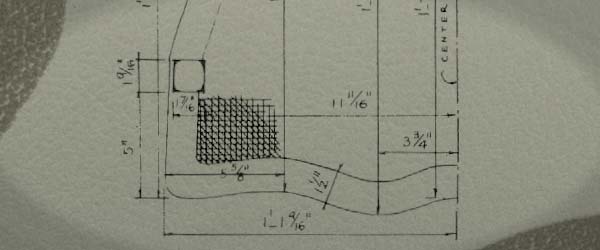
Accounts of plastic and rubber stretch back to discoveries by Columbus in 1492. According to John Martin’s book, The Romance of Rubber, Columbus noted ‘a simple game which he saw being played with a ball that bounced’. Martin also explains that
In 1731…La Condamine, wrote of a tree called “Hevea”.
“There flows from this tree a liquor which hardens gradually and blackens in the air”.
He found the people of Quito (Ecuador, South America) waterproofing cloth with it, and the Amazon Indians were making boots which, when blackened in smoke, looked like leather.
Wikipedia notes that German professor, F. J. Otto had produced guncotton in 1846 and was the first to publish the process. According to Fungs’ book, Coated and Laminated Textiles,
nitro-cellulose was discovered and developed as a fabric coating material for cotton. The material became known as ‘gun cotton’, ‘pyroxylin’ and ‘collodion’, and was used in many applications (Fung, 2000).
Technology in Society wrote about how polyvinyl chloride (PVC) was discovered,
In 1860, Hofmann observed that vinyl-bromide, a colorless liquid, changed into a white porcelain-like mass. This process was a mystery to him, and he referred to it as a ‘metamorphosis’. In 1872, Baumann, elaborating on these results, became the first to make polyvinyl chloride, a white milky precipitate made by putting tubes filled with vinyl chloride in direct sunlight. Like other chemists of the time, Baumann showed no interest in applying the new material.
‘The newer plastics appearing…marked a fundamental shift in the way new materials came into existence’, is highlighted in the book ‘American Plastic: A Cultural History’. Meikle points out how previously, items were made from natural materials such as wood, ivory, tortoiseshell, agate and coral. Americans refused to buy household or personal products made from an earlier synthetic resin called Celluloid, invented in 1869, unless it resembled ‘natural’ materials.
Fabrikoid, which became a Du Pont product, was initially marketed as one of the first faux leathers which had widespread success. According to the Du Pont website;
Produced by coating fabric with nitrocellulose and marketed as artificial leather, Fabrikoid was widely used in upholstery, luggage and book bindings during the early 20th century. In the 1920s, Fabrikoid became the preferred material for automobile convertible tops and seat covers…but by the 1940s new, more durable vinyl-coated fabrics overtook the market.
Following this, Du Pont launched a new product which was initially called Corfam which was supposed to replace leather as explained by Kanigel. His book further outlines
Corfam was no tacky low-life vinyl. It was protected by a slew of patents covering every stage of its manufacture…It was leather-like. It was synthetic leather. Artificial leather. Imitation leather. Fake leather. Or, to use the French word that slyly slips around the stigma of fake, faux leather.
However, some years later, Du Pont made the decision to ‘terminate the production of Corfam, which had failed despite heavy investment in technology and consumer research’ (Du Pont, 2014).
Mulder and Knot outline how PVC’s relative non-flammability, durability, insulation properties, and resistance to humidity and various chemicals were practical reasons for its broad incursion into the consumer market.
Kanigel highlights that it was Naugahyde faux leather that became the emblem of the 1950s. Naugahyde was adopted by the D.I.Y. craze of the era. Top end designers used it, ‘even chairs in the United Nations building in New York, it was everywhere’.
By the mid 1960s Uniroyal, the manufactures of Naugahyde, had numerous look alike competitors; the world’s premier maker of imitation leather was itself being challenged by imitators’.
Today, much attention is now shifting to the recyclability of vinyl fabric and PVC.
As ‘vinyl’, is a thermoplastic material made of 57% chlorine (derived from industrial grade salt) and 43% carbon (derived predominantly from oil / gas via ethylene), PVC is extremely durable (it is commonly used to make long-lasting products, often with a life-expectancy exceeding 60 years). Thanks to its unique polymer structure, PVC products are well suited for recycling when they come to the end of their life (recovinyl.com, 2015).
Fung highlights that Du Pont are still at the forefront of vinyl fabric research and are currently examining how to manufacture biodegradable polymers by using plants as the starting material. The end result may eventually see significantly less non-renewable oil being made into textiles.
References:
Martin, J. (2007) The Romance of Rubber. Available at: http://www.gutenberg.org/files/4759/4759-h/4759-h.htm [Accessed 31 March 2015]
Nitrocellulose (2015). Guncotton. Available at: https://en.wikipedia.org/wiki/Nitrocellulose [Accessed 9 April 2015].
Fung, W. (2000) Coated and Laminated Textiles. Cambridge: Woodhead Publishing Ltd.
Du Pont (2014) 1910 Artificial Leather. Available at: http://www2.dupont.com/Phoenix_Heritage/en_US/1910_detail.html [Accessed 31 March 2015].
Meikle, J.L. (1995) American Plastic: A Cultural History. New Jersey, USA, Rutgers University Press, p.p. 82
Mulder, K. and Knot, M. (2001) ‘PVC plastic: a history of systems development and entrenchment’ Technology in Society. Volume 23, Issue 2, April 2001, Pages 265–286
http://www.sciencedirect.com.ucd.idm.oclc.org/science/article/pii/S0160791X01000136
Semon, W.L. and Stahl G.H. (1982) History of vinyl chloride polymers. New York: Marcel Dekker, pages 199–214
Kanigel, R. (2007) Faux Real: Genuine Leather and 200 Years of Inspired Fakes. University of Pennsylvania, Philadelphia
Du Pont (2014) 1986 Richard E. Heckert. Available at: http://www2.dupont.com/Phoenix_Heritage/en_US/1986_b_detail.html [Accessed 31 March 2015]
Naugahyde (2015) INNOVATION THAT MATTERS. Available at: https://www.naugahyde.com [Accessed 31 March 2015]
Martin, J. (2007) The Romance of Rubber. Available at: http://www.gutenberg.org/files/4759/4759-h/4759-h.htm [Accessed 31 March 2015]
Recovinyl (2015) PVC, a Recyclable Material – Ideal for Reprocessing. Available at: http://www.recovinyl.com/pvc-recyclable-material-ideal-reprocessing [Accessed 2 April 2015].
